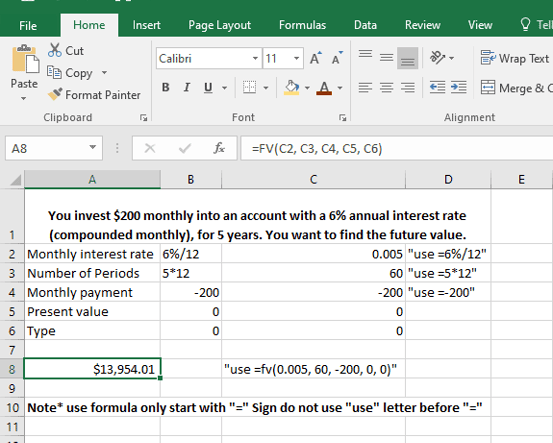Calculate Future Value with Excel's future value function
Learn how to use the future value function in Microsoft Excel to calculate the future value of an investment. Discover the benefits of periodic payments and constant interest rates for effective financial planning.
4/9/20251 min read
FV (Future Value)
The FV (Future Value) function in Microsoft Excel calculates the future value of an investment based on periodic, constant payments and a constant interest rate.
🔹 Syntax of FV function:
=FV(rate, nper, pmt, [pv], [type])
rate – The interest rate per period.
nper – Total number of periods (e.g., months or years).
pmt – Payment made each period (enter as a negative number).
pv – Present value or initial investment (optional, default is 0).
type – When payments are due:
0 = end of period (default),
1 = beginning of period.
🔸 Example Scenario in Excel:
You invest $200 monthly into an account with a 6% annual interest rate (compounded monthly), for 5 years. You want to find the future value.
💡 Excel Example Input:
Description Value
Monthly Interest Rate =6%/12
Number of Periods =5*12
Monthly Payment =-200
Present Value =0
Type =0
Excel Formula:
=FV(6%/12, 5*12, -200, 0, 0)
✅ Output:
=FV(0.005, 60, -200, 0, 0) → $13,931.99
So, after 5 years, you’ll have $13,931.99 saved.


Knowledge
Connect
info@eduglow.in
+91-9313746414
© 2024. All rights reserved.
